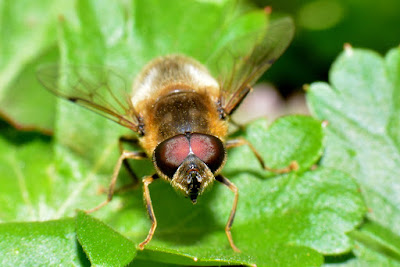All and all it’s just another brick…🔨
Actually, it’s just another link in the food chain.
Today, whilst reflecting and gazing into the pond, I spotted this oddity.
(It is white and is above the pink floating petals and to the right of the green leaves)
It is a ‘rat-tailed maggot’, which is the larval stage of a Drone Fly (Eristalis tenax)Drone flies are the largest members of the Hover fly family.
There are 280 species of hover flies which are excellent pollinators and essential for a healthy garden. They mimic wasps, honey bees and bumblebees.They are completely harmless and are fascinating to watch. They get their names from being able to hover and hold their station (much like a kestrel, a windhover) either to guard their territory or attract a mate.
Their life cycle is simple. Eggs are laid in water which evolve into larvae, then they pupate before emerging into adults which start the process all over again.
The larva of the drone fly is called a rat-tailed maggot due to its long breathing tube at its rear, which resembles a tail. The body of the larva measures 20mm and the tail measures a further 15mm. However I believe they can grow much bigger and I read somewhere that the tails could extend to 150mm. The tails are used like snorkels to reach the surface and through which they respire.(breathe)
They feed on organic detritus in the water.
They form part of the food chain and so are predated upon by dragonflies and diving beetles, which are expected to arrive soon, now that the warmer weather is here. My bistro pond is well and truly open for business and offers a wonderful dining experience.
Here you can see a clearer image of the extending tail, as well as mosquito larvae, ‘wrigglers’, adding to the menu.
Adult Drone Fly Image courtesy of Ben Kerckx @ pixabay.com























